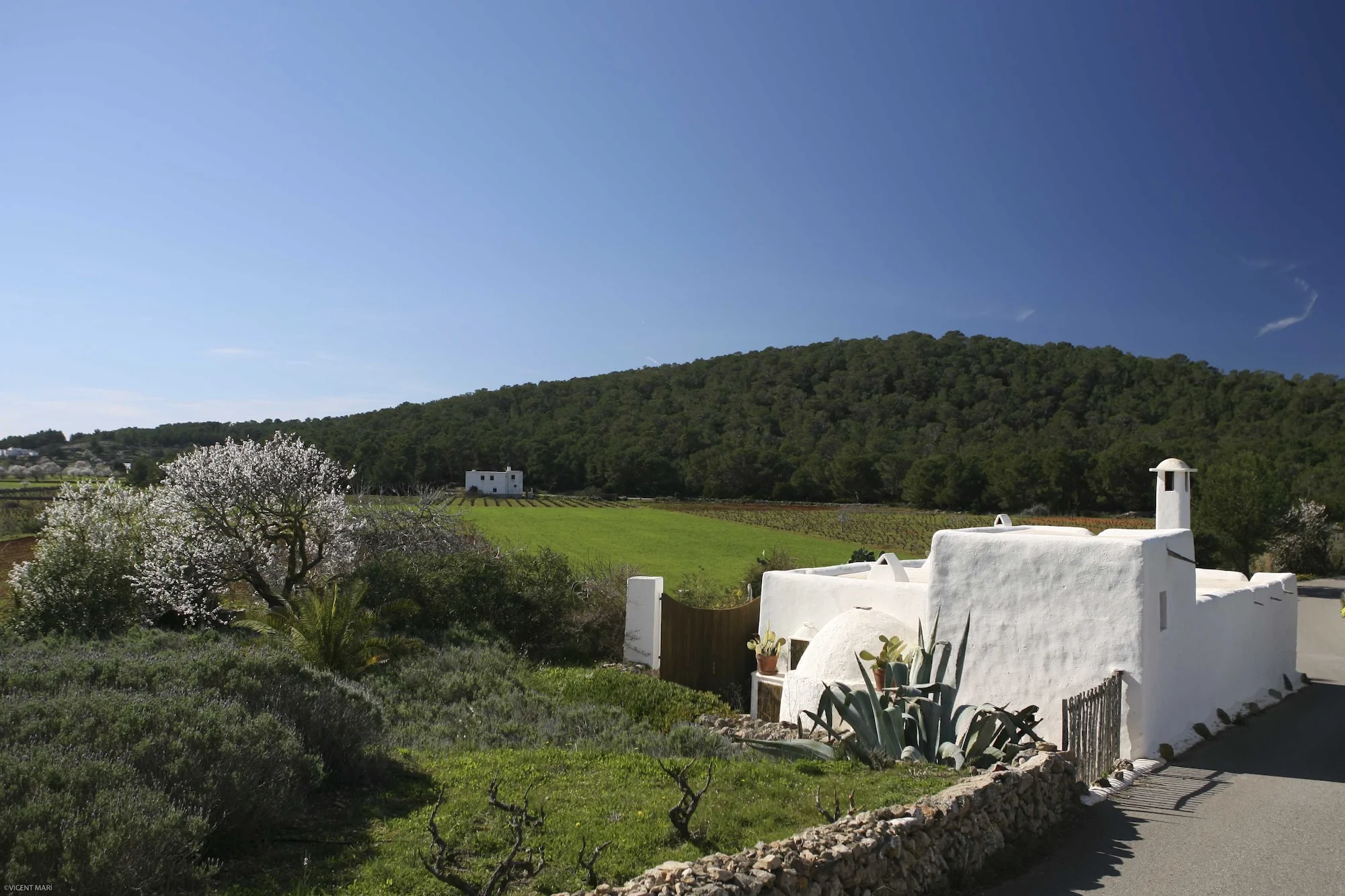Ibiza’s traditional architecture stands as one of the island’s most iconic and enduring symbols, deeply rooted in both practicality and aesthetic appeal. From the crisp white façades of its rural homes to its fortified churches and defensive towers, this architectural heritage tells the story of a culture shaped by history, geography, and necessity.
The omnipresent whitewashed walls are not just a visual choice but a functional one, providing a timeless elegance while reflecting the sun’s harsh rays, creating a serene, cool atmosphere.
The dominance of white: history and practicality
The hallmark of traditional architecture in Ibiza is undoubtedly the white colour that blankets its houses, churches, and other structures. This distinctive hue, which has earned the island the nickname ‘White Island‘, originates from the widespread use of limewash. In the past, lime was an affordable, accessible material used by local farmers to coat their homes, offering protection from the elements and acting as a natural disinfectant. Although lime had to be reapplied frequently, its cost-effectiveness made it a popular choice, and this tradition has endured for centuries.
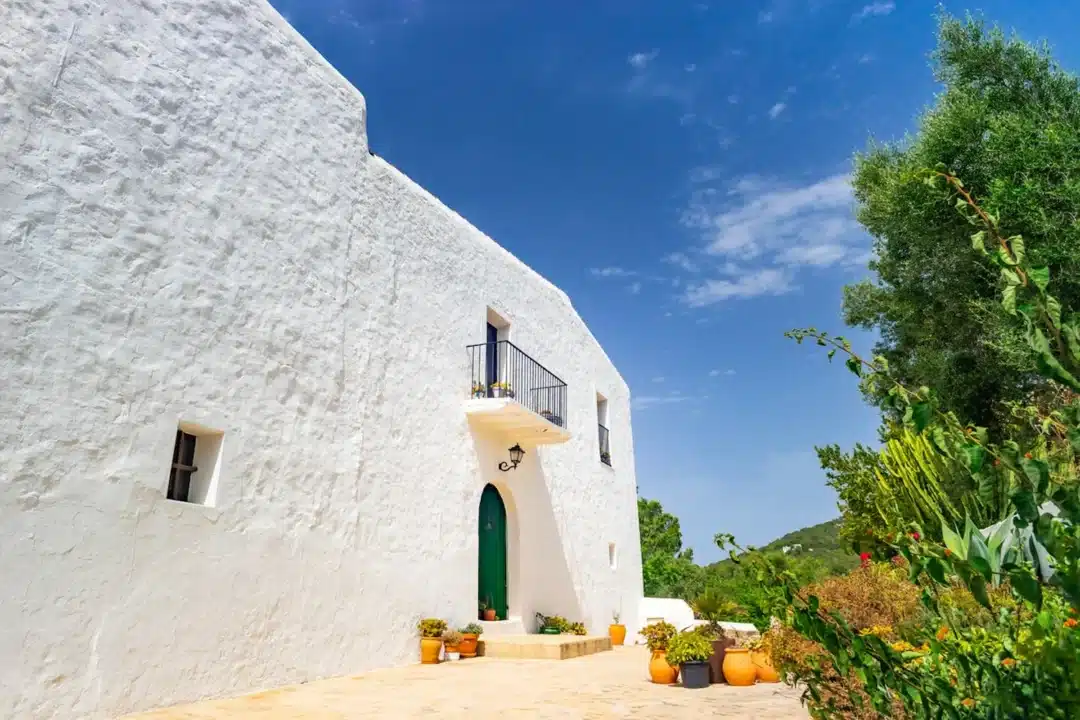
Even in modern times, when alternative building materials and techniques have become available, the white aesthetic continues to dominate. Contemporary houses on the island still adhere to this tradition, preserving the visual identity of the island while benefiting from the practical advantages of whitewashing. The reflective quality of these white walls creates an interplay of light and shadow, adding to the island’s peaceful atmosphere. This connection between tradition, practicality, and beauty is at the heart of Ibiza’s traditional architecture, making it a key aspect of the island’s identity.
Defensive structures: a reflection of Ibiza’s turbulent past
While the tranquil beauty of Ibiza’s traditional architecture is well-known, the island’s history of piracy and conflict has also left its mark on its buildings. One of the most striking examples of this is the network of coastal defence towers constructed in the 16th century. These towers, strategically placed along the coast, served as early warning systems against pirate invasions. Their robust construction and commanding views of the sea allowed islanders to detect incoming ships, giving them time to prepare for an attack.
In addition to the towers, many of Ibiza’s village churches were fortified, serving a dual purpose. While primarily places of worship, these churches also provided refuge for local populations during times of crisis. The thick walls and minimal windows, typical of traditional architecture, not only kept the buildings cool in the summer but also made them difficult to breach. Today, these defensive structures have been absorbed into the landscape, blending seamlessly with the more peaceful surroundings but standing as a reminder of the island’s turbulent past.
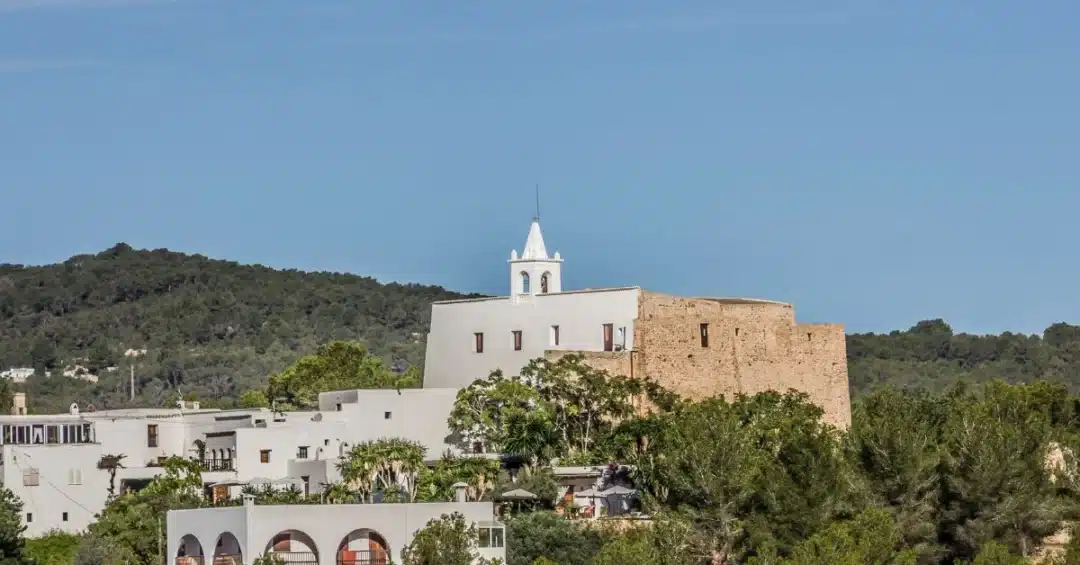
Simplicity and functionality: the essence of traditional Ibiza homes
The simplicity of Ibiza’s traditional architecture is one of its most appealing features. The ‘casa pagesa’, or farmhouses, are the most characteristic examples. These homes are distinguished by their minimalist, rectangular shapes, which were expanded over time to accommodate growing families. Built using local materials, the thick, whitewashed walls and small windows helped regulate the temperature inside, keeping the interiors cool in the summer and warm during the cooler months.
Despite their simplicity, these houses were highly functional. Features such as water cisterns, wells, and traditional wood-fired ovens can still be seen in many of these homes, though many have fallen out of use in modern times. Inside, the decor was similarly austere, with a focus on practicality rather than excess. The minimal furnishings reflected the lifestyle of Ibiza’s early inhabitants, who valued functionality over adornment.
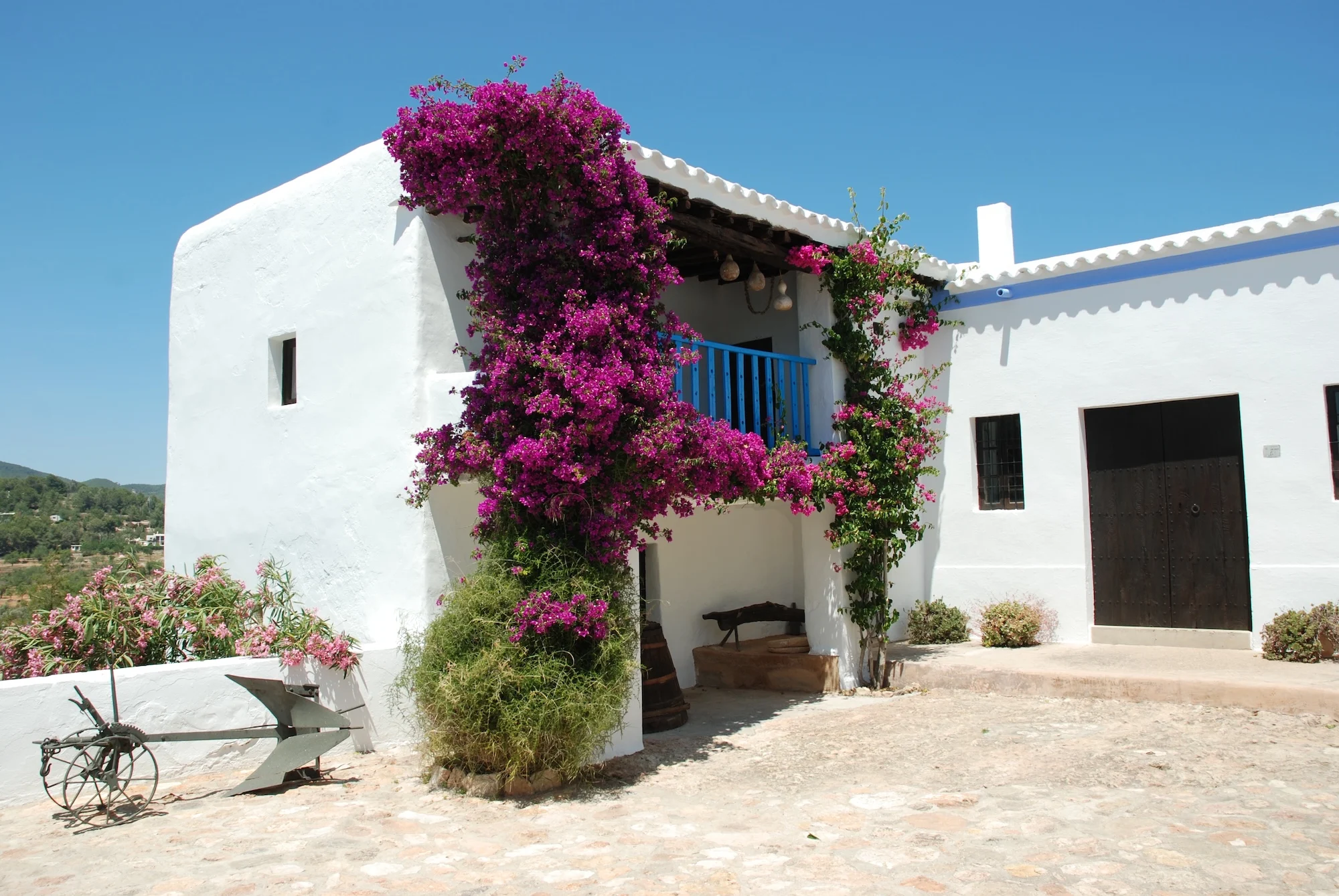
This understated aesthetic has inspired architects throughout the 20th century and beyond. Notable figures such as Josep Lluis Sert and Erwin Broner were captivated by the simplicity of traditional architecture on the island. Their work, including Sert’s Can Pep Simó and Broner’s iconic Casa Broner, highlights the lasting influence of Ibiza’s architectural heritage. Today, Casa Broner is a museum, showcasing the blend of traditional Ibicenco design and modern architectural innovation.
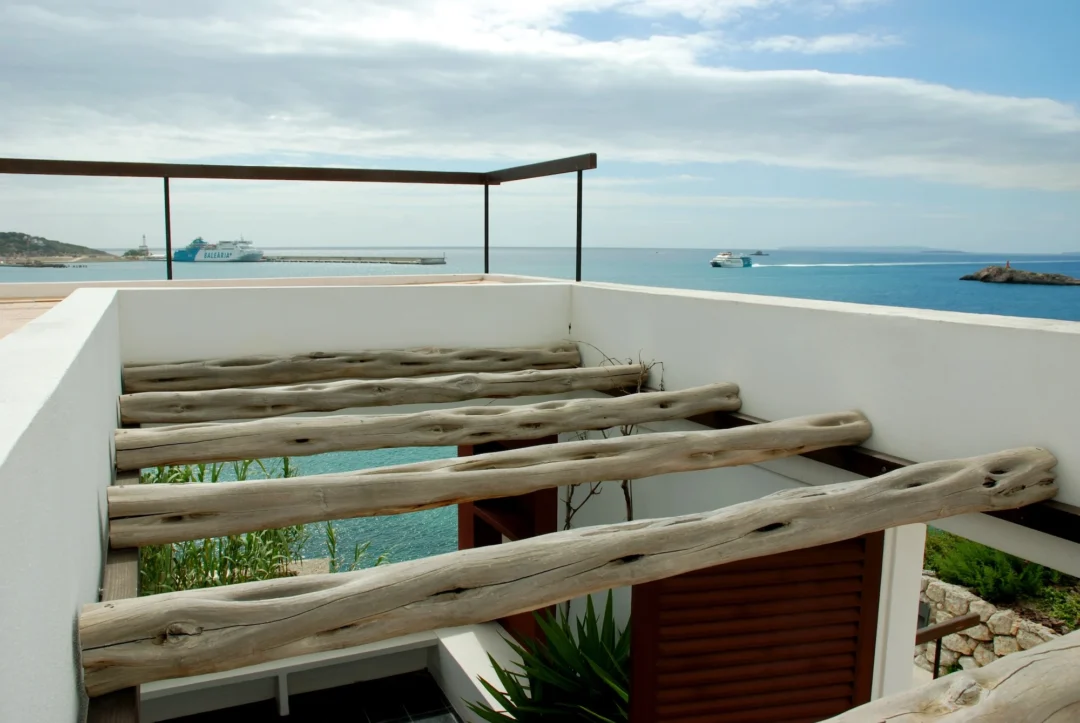
Preserving Ibiza’s architectural heritage
In addition to the homes and defensive structures, Ibiza’s landscape is dotted with windmills and watermills, another nod to the island’s agricultural past. These mills, which played a vital role in the island’s rural economy, have now become symbols of Ibiza’s enduring connection to its history and the land.
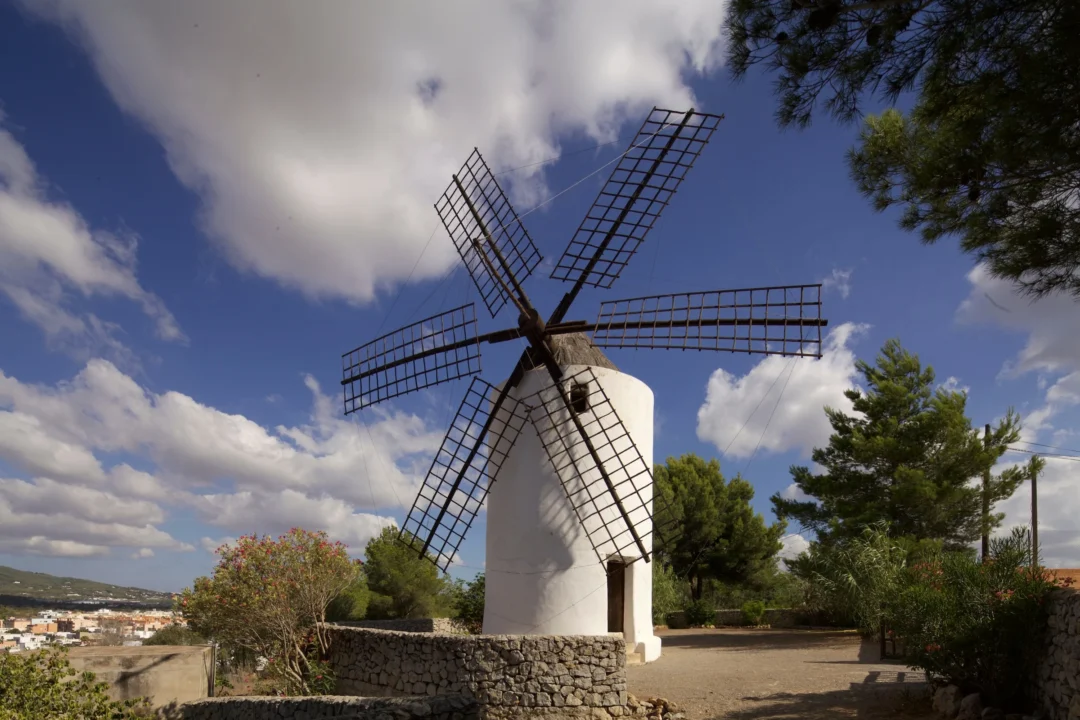
Efforts to preserve the island’s traditional architecture have been spearheaded by local architects and conservationists. For example, Raimon Torres played a key role in protecting historical districts like sa Penya and la Marina, ensuring that Ibiza’s unique architectural style remains intact even as the island evolves. These preservation efforts ensure that visitors to the island can still experience the authentic beauty of its buildings, from ancient farmhouses to majestic churches.
Ibiza’s traditional architecture is more than just a style; it’s a testament to the island’s history, culture, and resilience. From the omnipresent white walls that reflect the Mediterranean sun to the defensive towers and fortified churches that speak of a time when the island had to protect itself from invaders, every element of Ibiza’s architecture has a story to tell. As the island continues to grow and develop, its architectural heritage remains a vital part of its identity, drawing visitors from around the world who come to experience its unique blend of beauty, history, and functionality.
